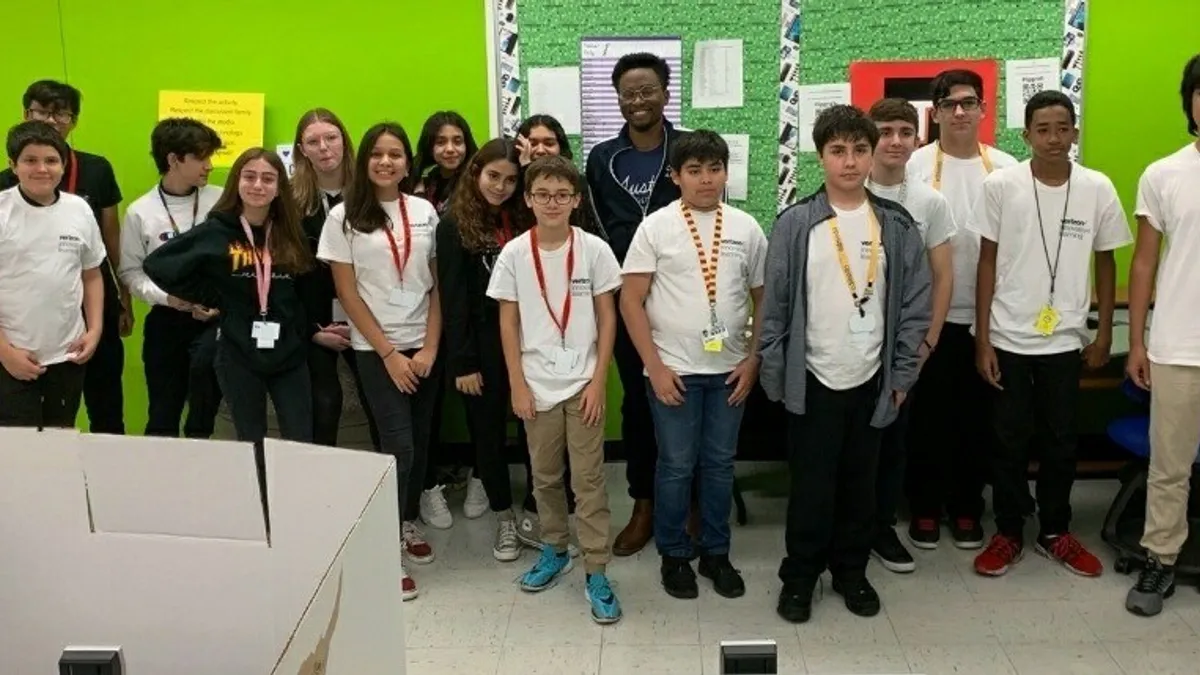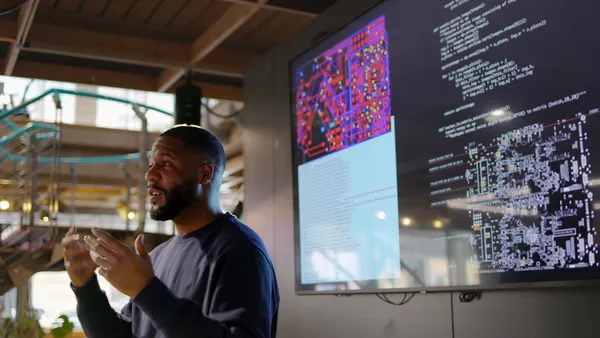Dive Brief:
- Schools are continuing student-run IT help desks remotely while buildings remain closed. Miami-Dade's Hammocks Middle School veteran educator and student coach Beatriz Llano-Scherker says remote student support opportunities not only give her school's participants hands-on experience in a potential career interest, but also has led to a decrease in help tickets over time as educators and students adjust to remote learning and devices.
- Prior to closure, 17 students were trained and deployed to serve the Florida middle school's 600 students and 35 teachers. Students who graduate from the program have a chance to continue pursuing their interests in high school through CTE certification.
- The student help desk, made possible in part by Verizon's Innovative Learning Schools, serves as an elective and has become somewhat of a "prestigious" undertaking for students in just its first year. It is expected to expand in the next academic year, with 200 student applicants already in.
Dive Insight:
Before the pandemic, in-person student tech internships, apprenticeships and other models of career and technical education were taking off as a majority of states enacted policies to support CTE. Now that schools have closed, educators are finding ways to continue these programs remotely.
When it comes to tech support, these models not only give students hands-on experience and credit in a lucrative career field, they provide schools with valuable in-house resources.
Webster Central (New York) School District's Brian Zimmer says for his educational technology and information department, student interns served as the "first line of defense" when it came to device repair.
Llano-Scherker agreed, pointing out that at Hammocks Middle School, not only do students help teachers they're assigned to support as part of the program, but they also often willingly support students and instructional staff in their classes.
"Tech team students will notice trends and glitches," Llano-Scherker said. "They are the ears and eyes out there because we can’t be in every single team meeting that every single class a teacher is hosting."
To prepare for their deployment in the classes they support, students train for the ins and outs of the devices and the few apps the middle school uses, practice on their mentors, and are assigned to a handful of teachers.
Llano-Scherker said the program served as a gateway for students to pursue other related extracurricular activities like after-school STEAM clubs.
Llano-Scherker shared some tips school administrators could use to launch or continue student tech support remotely:
- Collaborate with others: district IT offices, community partners that may provide infrastructure and resources for the program, parents, students and other stakeholders.
- Be virtually "hands-on" with coaches and students in the program. Teachers and students know they have outside support, Llana-Scherker explained, because district office representatives, community partners like Verizon, and even principals are hands-on in responding to their needs. Her principal, for example, conducted face-to-face interviews with every student applicant for the team that could translate to remote interviews now that school is virtual.
- Don't limit students from joining tech teams because of their GPAs. "Some of our most stellar children aren’t the 4.0 students, but they're highly intelligent when it comes to technology," Llana-Scherker said. "But they have to be well-behaved because they have to be trusted ambassadors."
- Train on a handful of applications so students and teachers are not overwhelmed. Along with the ins and outs of the apps, train students on etiquette. "The thing about this generation of children is that they came through the birth canal holding a device," Llana-Scherker said. So she says to her students, "Promise me that you’ll never say to any adult, 'Oh, that's easy.'”
- Provide feedback avenues for students and teachers.







 Dive Awards
Dive Awards







